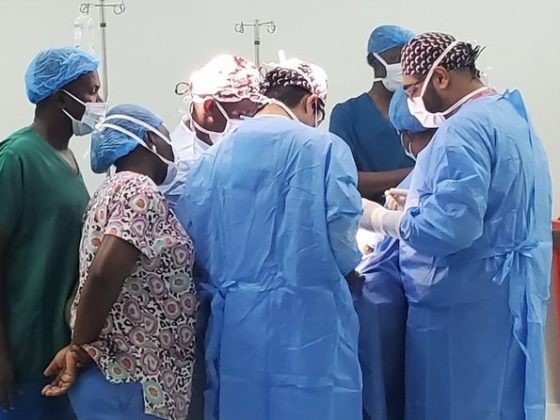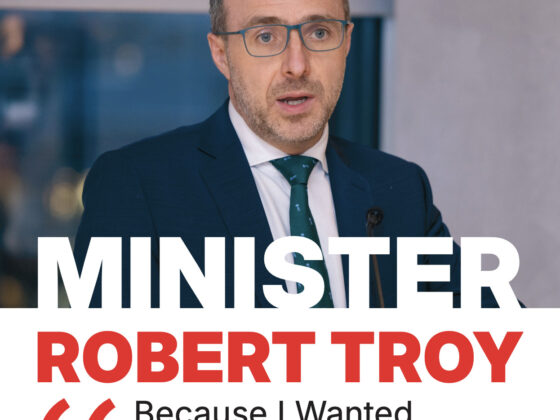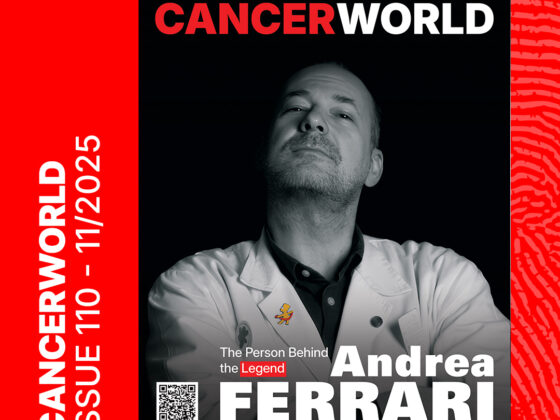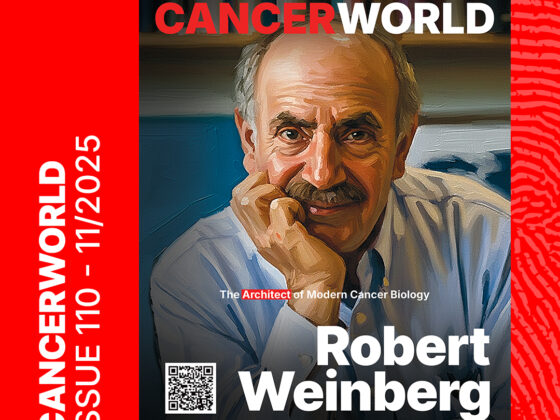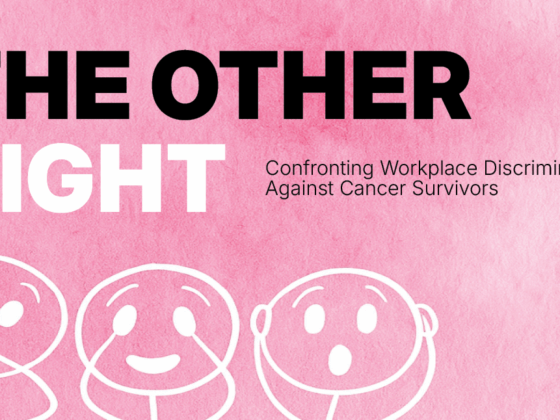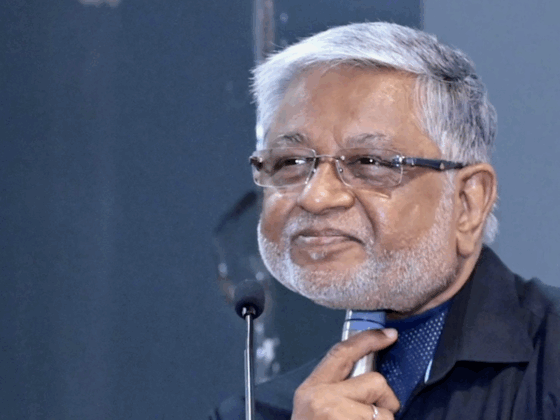“We’ve heard politicians saying, ‘It’s a time bomb’. No, it’s not a time bomb. We see the system is cracking completely right now.” Norbert Couespel, senior coordinator of policy research at the European Cancer Organisation, voices his deep frustration at the failure of Europe’s leaders to address the crisis in their healthcare workforces. Having spent several years now working alongside professional bodies from across Europe’s cancer community, Couespel has built up a detailed overview of how deep this crisis is, and how it is impacting on overstretched professionals, and on the patients they serve.
It’s a bleak picture, he tells Cancerworld, but what makes it really worrying is that, for two decades, Europe’s leaders have been turning a deaf ear to increasingly urgent warnings about the imminent crisis.
Cancerworld ran an editorial on this “ticking time bomb” in 2015, at a time when austerity measures following the financial crisis were depressing health spending across Europe, with investment in the healthcare workforce well down the list of priorities. The editorial referred to a prediction made by the European Commission that, “by 2020 there will be a nursing shortage of more than half a million and an overall clinical workforce shortage of nearly 1 million, rising to 2 million if long-term care and ancillary professions are taken into account.”
Sadly, those warnings went largely unheeded, says Couespel, “The cancer workforce element has been a bit of a dead angle from cancer policy in the last years. The workforce topic has not been tackled that much, especially when it comes to looking at shortages, burnout, working conditions.”
So, when the Covid pandemic struck in 2020, and in the years of ‘playing catchup’ that followed, much of Europe’s healthcare workforce became stretched beyond its limits. In many instances, this has set off a vicious cycle of people leaving the workforce due to stress and burnout, thereby putting the staff who remain under yet more pressure, leading to a further exodus.
The OECD report Ready for the Next Crisis? Investing in Health System Resilience, published in February 2023, points out that, after Covid-19, “populations and health systems in many countries are struggling to recover fully”. It argues that, “the pandemic left front-line health care and long-term care workers overstretched and exhausted, raising concerns that this could lead to an exodus. This would compound the strain on those remaining in the sector and stretch the resources needed for high-quality care delivery, including to address the substantial increase in mental health needs.”
The crisis now presents a major obstacle to raising the quality of care, says Couespel. “The right of cancer patients to specialised multidisciplinary cancer care can never be achieved while the acute and pressing crisis in oncology workforce shortage is left unaddressed.” Yet, even now, European and national policy makers still seem to be struggling to put together an adequate response. Europe’s professional cancer organisations, working together under the auspices of the European Cancer Organisation (ECO), have therefore developed their own coherent set of policy proposals as part of ECO’s ‘Time to Accelerate’ manifesto. They have also organised a ‘Cancer Workforce in Crisis’ campaign to advocate for those policies throughout Europe in the run-up to the election. The campaign launch, at the 2023 ECO Summit, platformed frontline testimony about the impact of the crisis right across the cancer workforce.
Testimony from the frontline
Cancer nursing
Wendy Oldenmenger, Coordinator of Oncology Nursing Research at the Erasmus Cancer Institute in Rotterdam, spoke at the manifesto launch about the toll the pandemic has taken on nursing staff: “I think Covid-19 created a major issue for us. A lot of staff got burned out.”
She recounted a particular example she knew of personally, which will doubtless have been played out with slight variations time and again in hospitals all over Europe. This particular story related to an oncology triage service which, during the time of the pandemic was relocated from its original clinic into the emergency unit of a different hospital.
Such relocations were not uncommon during the pandemic. But the doctors who had previously carried out this triage work did not make the move, and they were replaced by junior doctors with no experience in oncology. During this time the number of patients managed at that hospital’s oncology unit tripled, with no commensurate increase in staff numbers. Nurse consultants had their hours extended, but they have also ended up spread more thinly. “Only two members of the nursing staff are now on shift at any moment of the day, with no admin clerks assigned,” said Oldermenger, which means those two nurses have to handle all phone calls and administrative work on top of their clinical duties.
“Only two members of the nursing staff are now on shift at any moment of the day, with no admin clerks assigned”
Of significance is the impact this situation is now having on staff retention. “Their shift lead left about a year ago and they carry on with still no replacement,” said Oldenmenger. “I know this nurse practitioner [the shift lead] myself, and I know he decided to take a sabbatical this year,” she said. “But for me, it’s uncertain whether he will ever come back again.”
Pathology
Speaking at the manifesto launch, Marta Cohen, head of histopathology at Sheffield Children’s Hospital, said that the UK is facing a severe ‘bottleneck’ in pathology, because people are retiring, and it’s “very difficult” to recruit replacements. She recounted how she’d spent three years trying to recruit somebody, and ended up having to “top up” her training, because the person she found had been trained differently. It takes 15 years to train a specialist pathologist in oncology, she said, so she, and many like her, are desperate to find ways to improve retention.
Cohen argued that the workforce crisis has been precipitated by “A perfect storm… from early retirement during Covid-19, to poor retention and life balance policies”. People want to work four days a week rather than seven, and are prepared to move to work in other countries, “like Qatar, Australia or New Zealand,” to get the work–life balance they want, she said.
Medical doctors
The increasing emphasis on preserving an acceptable work-life balance is impacting negatively on recruitment and retention right across the medical profession, according to Antanas Montvila, Vice-President of the European Junior Doctors’ Association. Speaking at the launch of the manifesto, he said “Medical doctors, especially junior doctors, feel that they are overworking. They are crushed by the demand.”
He talked about a generational shift in attitudes. Whereas traditionally it was considered that, if you join the medical profession, you would be 90% doctor, 10% family person, he said, “Now we want to have a bit more work–life balance; we aren’t ready to sacrifice our whole personal lives to stay in the hospital.” One contributory factor may be changing gender roles: whereas once doctors were usually male, and could generally rely on having a wife at home bringing up the family and tending to their needs, that is no longer the case.
The results of a qualitative study, From Tradition to Transition: navigating through the healthcare workforce crisis, carried out by the European Junior Doctors’ Association with representatives from 24 National Medical Associations, make sobering reading. Its headline finding was a sense of disappointment and job dissatisfaction shared across all the countries surveyed.
A study published by the British Medical Association in 2020 showed that there can be much more than job satisfaction and a good work–life balance at stake here, with fully 45% of doctors reported to be suffering from depression, anxiety, stress, burnout or other mental health conditions relating to, or made worse by, the Covid-19 crisis. Those figures concur with data compiled by ECO, charting the impact of Covid-19 on cancer care across Europe, which showed that 40% of healthcare workers felt burned out and 30% showed clinical signs of depression because of Covid-19.
The failure to attend to the needs of these doctors is resulting in a wave of ‘quiet quitting’ across Europe
The failure to attend to the needs of these doctors is resulting in a wave of ‘quiet quitting’ across Europe, says Montvila – “massive resignations by medical professionals, because we don’t want to take care of the system individually, of a system that is already failing.” In the UK, it has resulted in unprecedented waves of strikes by junior doctors over pay levels, which they say have dropped in real terms by more than 25% over the past 15 years, fuelling the exodus from medicine.
Cancer patients
The crisis in the health workforce is having an inevitable impact on the quality of care provided to cancer patients, as Wendy Oldermenger pointed out. “It’s not unusual to see increased errors, increased pressure ulcers, patients not receiving the medication promptly, or even having nutritional needs covered. These all have great implications for the outcomes of cancer care. We often cannot schedule patient chemotherapy when they need it, because there aren’t enough trained chemotherapy nurses who can look after these patients to administer this treatment,” she said.
That message was amplified by testimony from Rachel Giles, CEO of the International Kidney Cancer Coalition (IKCC), which represents kidney cancer patients around the world. She herself had recently been mistakenly referred for a PSA test – inappropriate because, as a woman, she has no prostate, and her problem related to her kidney. While that particular error was harmless, others do have serious consequences, she said. Giles also emphasised the more fundamental damage done to patients as a result of their doctors feeling stressed and rushed. And she highlighted the need to include patient advocates as partners in lobbying for effective measures to end the oncology workforce crisis.
“Patients feel intimidated to bring up what they feel are fairly trivial questions to their very rushed oncologist or nurse practitioner”
Patients come to the patient organisations and say they feel unheard and neglected, she said, and their stress and anxiety levels have “gone out the roof” in the last few years, “We’ve all measured this in our patient surveys… It has gone up incredibly, and this limited time for patient interaction has definitely contributed… Patients feel intimidated – this cannot be stressed enough – to bring up what they feel are fairly trivial questions to their very rushed oncologist or even nurse practitioner who is helping them along their path.”
Inadequate communication affects outcomes, she stressed, “[It] means patients are not really understanding their entire treatment care pathway,” which then has a knock-on effect on treatment adherence. Doctors who feel stressed and under pressure of time can also find it hard to listen to patients and offer them the support they badly need, particularly at vulnerable moments between the diagnosis and the start of treatment, which “to a certain extent affects the entire patient outlook on their entire journey.”
It is possible to be empathetic and to communicate effectively even with limited time, Giles stressed, and said patient organisations can help the clinical community find evidence-based ways to do this. They can also provide evidence to show the damage the current workforce crisis is doing. “Patient organisations are generating tons of data. WECAN [umbrella of European cancer patient advocate organisations] has over 20 organisations involved, and probably of the order of 100,000 patients have been surveyed in the last several years.” In the case of kidney cancers, the IKCC has data from 2,200 patients going back several years. In 2018, 2019, 2020 surveys showed over 90% satisfaction with the state of their care, said Giles. “Suddenly, in 2021–2022, it plummeted to 66%.” The take-home message, she said, is that “the healthcare profession is not serving patients in the way they need to be served.”
Sorting the cancer workforce crisis
Can a bunch of cancer professional and patient advocacy organisations come up with policy fixes that have evaded the best minds in European health policy for all these years? Looking at the proposals in the ECO Cancer Manifesto (pp23–24), it would seem that the obstacle has not been down to complexity of the solutions, so much as a failure to take the most basic steps to address the health workforce crisis.
In the manifesto, ECO points to the speed at which Europe mounted an effective response to the concerns over shortages of medicines and medical products during the pandemic. “European Medicines Agency and the new EU Health Emergency Preparedness and Response department are active and involved in preventing such shortages, and better managing cross-border cooperation when they do occur,” it notes. “Sadly, no such lesson has been learnt yet in respect to addressing health workforce shortage, another salient feature of the Covid-19 pandemic.”
“There’s an attitude that, somewhere along the line, if you build it, the workforce will come. It won’t. You have to plan for it”
A similar point was made by Cris Scotter, an advisor to the World Health Organization on human resources for health policy, who spoke at the Manifesto launch. “So much planning ignores the workforce. So many plans think about the service, think about the widgets, think about the white boxes, the beds, and the hospitals, and don’t necessarily consider the workforce. There’s an attitude that, somewhere along the line, if you build it, the workforce will come. It won’t. You have to plan for it.
The problem did not start with the pandemic, he stressed. “It’s been building for the last 20 years. It started with a lack of investment in the workforce. And it’s been an easy thing for governments to avoid to some degree because the workforce has always been seen as a cost rather than an investment”.
The solution, he advised, has to lead with encouraging investment in the workforce, and do the planning: “We need to put workforce planning into planning the service”. This should centre on “the three R’s’: recruitment, retention and return. Health systems need to be thinking about “active policies that bring these people back into the workforce,” he argued, pointing to the catastrophic loss to health systems resulting from people leaving or retiring early. “It costs so much to retrain someone, to gain all that experience. We should not be just allowing it to walk out the door. We need to optimise performance.”
Planning should include the service, the workforce, the finance and the equipment usage, Scotter advised: “And we need to be thinking about that at the very earliest stages.” Appropriate use of technology will also be key: “We can’t continue to rely on a workforce to do everything. We have to find ways of working better, and more innovatively, and we have to use technology when appropriate, but never forget to invest in the workforce,” he said.
The policy asks
Many of the policy asks in the manifesto simply call for the fundamental actions required to put that planning into practice.
Review: The EU should study the “extent, causes and policy solutions to health workforce shortage” and it should be carried out “immediately” to evaluate impacts on patient care and on the well-being of healthcare professionals and identify the opportunities to reduce bureaucracy as well as digital solutions to make oncology work more efficient.
Gather data: Detailed reports on health workforce resource capacity across the EU, and on inequalities in patient access to key oncology professions, should be carried out respectively by Eurostat – the EU’s statistical office – and the European Cancer Inequalities Registry – set up as part of Europe’s Beating Cancer Plan.
Map and plan: The EU Health Emergency Preparedness and Response Authority should be given the remit to conduct health workforce mapping and planning roles.
Innovate: Opportunities to mitigate the healthcare workforce crisis through better use of digital technology in healthcare should be included among the goals of the EU’s Digital Europe and EU4Health programme.
This latter point was touched on at the manifesto launch by Heather Moses, of Astra Zeneca, who pointed to the potential for advanced digital tools, such computational pathology, to ease the workloads of pathology departments, helping to address the bottlenecks that Marta Cohen had referred to earlier in the session. As an example, Moses mentioned partnership projects Astra Zeneca is running regarding X-rays and CT scans, looking at a nodal identification for triage for lung cancer. “So, very practically, this is making a big difference already. In addition, precision diagnostics may reduce diagnostic errors in general, and that leads to increased job satisfaction, as well as efficiencies when you’re looking at resilience with healthcare staff.”
Getting the planning and technicalities right will not be enough… Health systems need to value their staff and look after them
Getting the planning and technicalities right will not be enough to resolve the current crisis though, Montvila stressed. Health systems need to value their staff and look after them. Workforce planning will need to take account of the evolving work values of new generations of doctors – promote workplace flexibility, improve working environments, monitor and reduce workloads, ensure adequate rest periods, pay fairly, and get more women into leadership positions.
That approach is strongly supported by the 2023 OECD report on Investing in Health Systems Resilience, which comments that the pandemic “highlighted the importance of valuing front-line workers – particularly nurses and care workers – to revitalise health systems.”
The ECO Cancer Manifesto includes specific points on measures to support the mental health of healthcare professionals. It proposes that “Elements of the EU’s new Mental Health Action Plan should be targeted towards the support of healthcare professional mental wellbeing needs,” and that the European Cancer Inequalities Registry should ideally report not only on workforce numbers but also “indicators of workforce wellbeing.”
There are promising signs that Europe’s political leaders are ready to listen and act, said ECO’s policy head, Richard Price, citing the reference to the healthcare workforce crisis made by Ursula von der Leyen, President of the European Commission, in her State of the Union speech. “The Belgian presidency of the European Union, beginning in January, has made very clear that this [the healthcare workforce crisis] is going to be a number one top priority for them in the health dimension”, he added.
ECO and their member organisations are taking nothing for granted, however. In the run up to the June 2024 European elections, they plan to take the Cancer Workforce in Crisis campaign to different European countries to advocate for the adoption of the policy asks.



